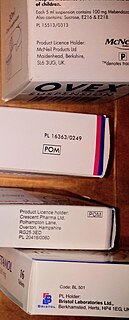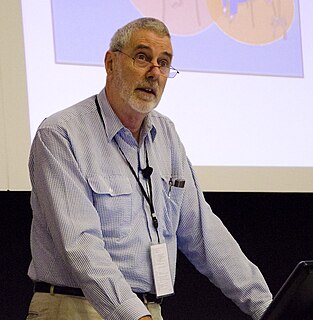
The Food and Drug Administration is a federal agency of the United States Department of Health and Human Services, one of the United States federal executive departments. The FDA is responsible for protecting and promoting public health through the control and supervision of food safety, tobacco products, dietary supplements, prescription and over-the-counter pharmaceutical drugs (medications), vaccines, biopharmaceuticals, blood transfusions, medical devices, electromagnetic radiation emitting devices (ERED), cosmetics, animal foods & feed and veterinary products. As of 2017, 3/4th of the FDA budget is paid by people who consume pharmaceutical products, due to the Prescription Drug User Fee Act.

A generic drug is a pharmaceutical drug that has the same chemical substance as the drug that was originally developed, patented and innovated. Generic drugs are allowed for sale after the expiry of the patent of the original drugs. Because the active chemical substance is the same, the medical profile of generics is believed to be equivalent in performance. The generic drug has the same active pharmaceutical ingredient (API) as the original, but it may differ in characteristics such as manufacturing process, formulation, excipients, color, taste, and packaging.

A prescription drug is a pharmaceutical drug that legally requires a medical prescription to be dispensed. In contrast, over-the-counter drugs can be obtained without a prescription. The reason for this difference in substance control is the potential scope of misuse, from drug abuse to practicing medicine without a license and without sufficient education. Different jurisdictions have different definitions of what constitutes a prescription drug.
The pregnancy category of a medication is an assessment of the risk of fetal injury due to the pharmaceutical, if it is used as directed by the mother during pregnancy. It does not include any risks conferred by pharmaceutical agents or their metabolites in breast milk.

Bioequivalence is a term in pharmacokinetics used to assess the expected in vivo biological equivalence of two proprietary preparations of a drug. If two products are said to be bioequivalent it means that they would be expected to be, for all intents and purposes, the same.

Cefuroxime, sold under the brand name Zinacef among others, is a second-generation cephalosporin antibiotic.

Lumiracoxib is a COX-2 selective inhibitor nonsteroidal anti-inflammatory drug.

Piroxicam is a nonsteroidal anti-inflammatory drug (NSAID) of the oxicam class used to relieve the symptoms of painful inflammatory conditions like arthritis. Piroxicam works by preventing the production of endogenous prostaglandins which are involved in the mediation of pain, stiffness, tenderness and swelling. The medicine is available as capsules, tablets and as a prescription-free gel 0.5%. It is also available in a betadex formulation, which allows a more rapid absorption of piroxicam from the digestive tract. Piroxicam is one of the few NSAIDs that can be given parenteral routes.
The Australian Drug Evaluation Committee or ADEC, was a committee that provided independent scientific advice to the Australian Government regarding therapeutic drugs. The committee was originally formed in 1963 and more recently authorised under the Therapeutic Goods Act 1989 (Cth) as part of the Therapeutic Goods Administration (TGA). In 2010, ADEC was replaced by the Advisory Committee on Prescription Medicines (ACPM)
The Adverse Drug Reactions Advisory Committee or ADRAC is a subcommittee of the Australian Drug Evaluation Committee (ADEC) which monitors the safety of medicines in Australia. ADRAC evaluates reports from the Adverse Drug Reactions Unit of the Therapeutic Goods Administration (TGA), which administers the adverse drug reaction (ADR) reporting system in Australia, and may make recommendations regarding the medication including withdrawal of medications from the market. ADRAC also publishes the Australian Adverse Drug Reactions Bulletin to raise awareness of medication safety issues and ADR reports.
The Standard for the Uniform Scheduling of Medicines and Poisons (SUSMP) is an Australian legislative instrument produced by the Therapeutic Goods Administration (TGA). Before 2010, it was known as the Standard for the Uniform Scheduling of Drugs and Poisons (SUSDP). The SUSMP classifies drugs and poisons into different Schedules signifying the degree of control recommended to be exercised over their availability to the public.

Amfepramone, also known as diethylpropion, is a stimulant drug of the phenethylamine, amphetamine, and cathinone classes that is used as an appetite suppressant. It is used in the short-term management of obesity, along with dietary and lifestyle changes. Amfepramone is most closely chemically related to the antidepressant and smoking cessation aid bupropion, which has also been developed as a weight-loss medicine when in a combination product with naltrexone.

Tafenoquine under the commercial name of Krintafel is an 8-aminoquinoline drug manufactured by GlaxoSmithKline that is being investigated as a potential treatment for malaria, as well as for malaria prevention.

Kunzea ambigua, commonly known as white kunzea, poverty bush or tick bush, is a plant in the myrtle family, Myrtaceae and is found mainly on sandstone soils in eastern Australia. Growing up to 5 m (16 ft) high and wide, it bears small white flowers in spring. Used in native gardening, it attracts native insects. It is also used in amenities planting and sand dune stabilization.

Periciazine (INN), also known as pericyazine (BAN) or propericiazine, is a drug that belongs to the phenothiazine class of typical antipsychotics.

Black salve, also known by the brand name Cansema, is a dangerous and controversial alternative cancer treatment. The product is commonly classified as an escharotic—a topical paste which burns and destroys skin tissue and leaves behind a thick, black scar called an eschar. Escharotics were widely used to treat skin lesions in the early 1900s, but have since been replaced by safer and more effective treatments. Escharotics, such as black salves, are currently advertised by some alternative medicine marketers as treatments for skin cancer, often with unsubstantiated testimonials and unproven claims of effectiveness.
Ipca Laboratories is an international pharmaceutical company based in Mumbai, India. It produces Theo bromine, Acetylthiophene, and P-Bromo Toluene as Active Pharmaceutical Ingredients (APIs). Ipca sells these APIs and their intermediates world over. It produces more than 150 formulations that include oral liquids, tablets, dry powders, and capsules. The various kinds of drug intermediates that the company manufactures include Theo bromine, Acetylthiophene, and P- Bromo Toluene and promotes over 36 countries of Asia, Africa, CIS, and South America, including Cambodia, Kazakhstan, Kenya, Mauritius, Myanmar, Nigeria, Oman, Russia, Sri Lanka, Sudan, Tanzania, Ukraine, Vietnam and Yemen. The main activities of company are to produce and market pharmaceuticals and drugs. The various products of the company include formulations, drug intermediates, and active pharmaceutical ingredients (API).

Drug nomenclature is the systematic naming of drugs, especially pharmaceutical drugs. In the majority of circumstances, drugs have 3 types of names: chemical names, the most important of which is the IUPAC name; generic or nonproprietary names, the most important of which are the International Nonproprietary Names (INNs); and trade names, which are brand names. Generic names for drugs are nowadays constructed out of affixes and stems that classify the drugs into different categories and also separate drugs within categories. A marketed drug might also have a company code or compound code.

Kenneth John (Ken) Harvey AM is an Australian public health doctor, currently adjunct Associate Professor at the School of Public Health and Preventive Medicine at Monash University. Described by The Age as an "anti-quackery crusader", Harvey is an advocate of evidence-based medicine and a critic of pharmaceutical marketing and unproven diet products. He is the President of Friends of Science in Medicine.















